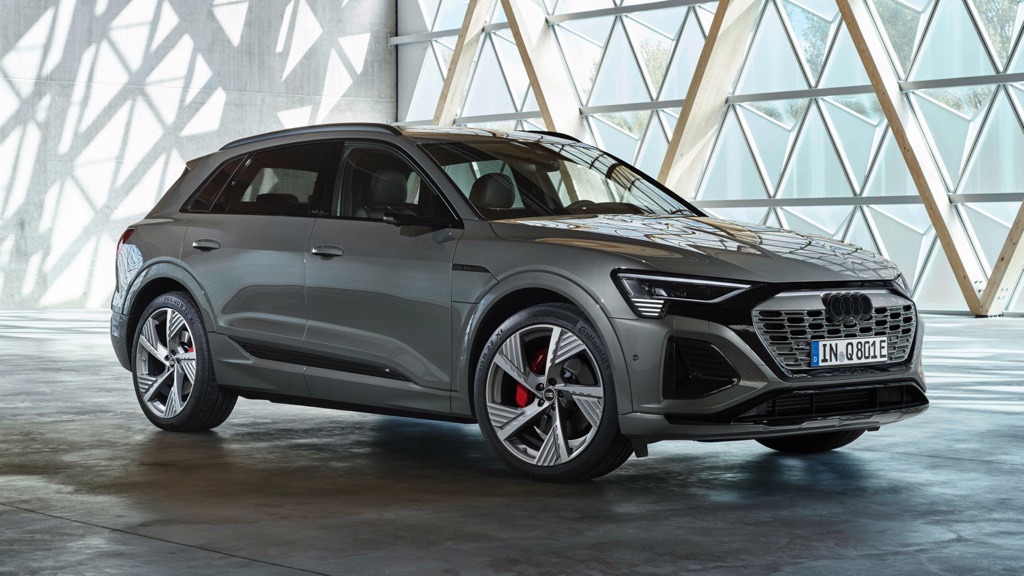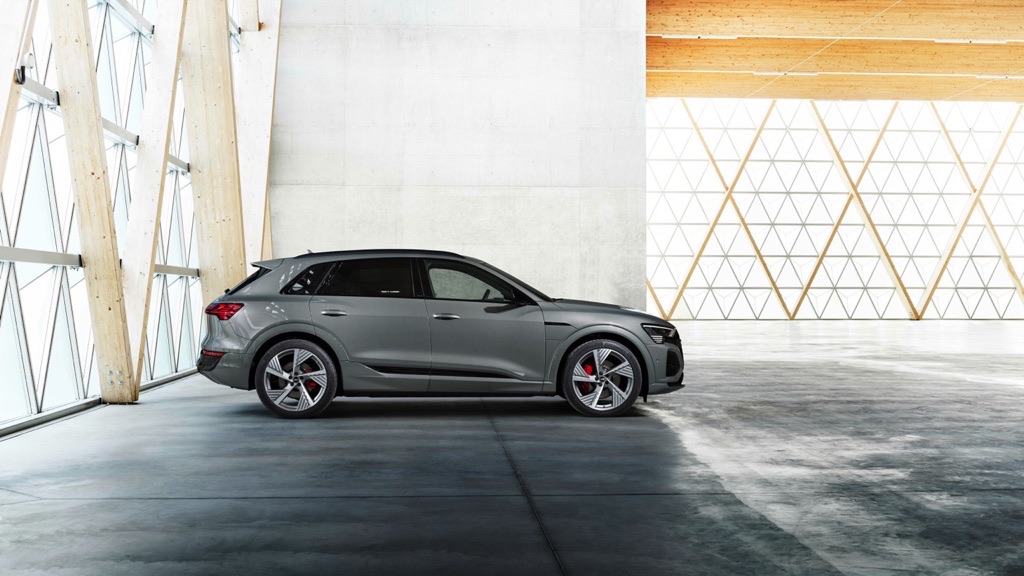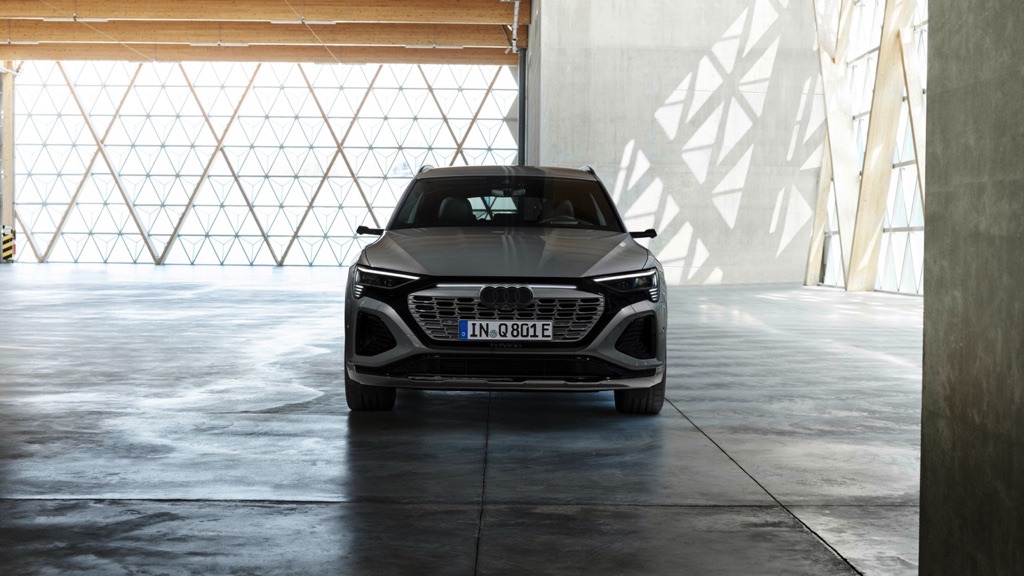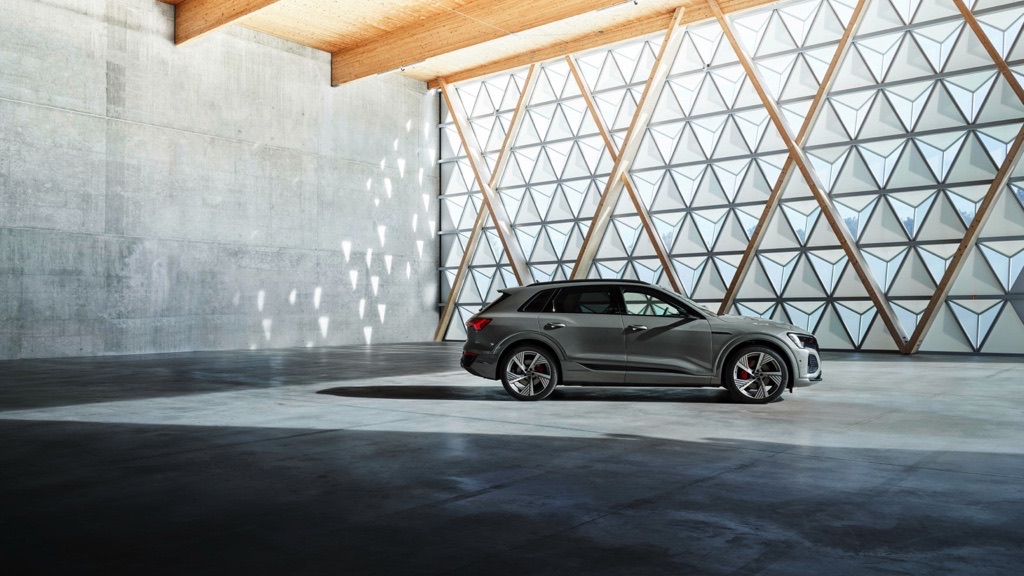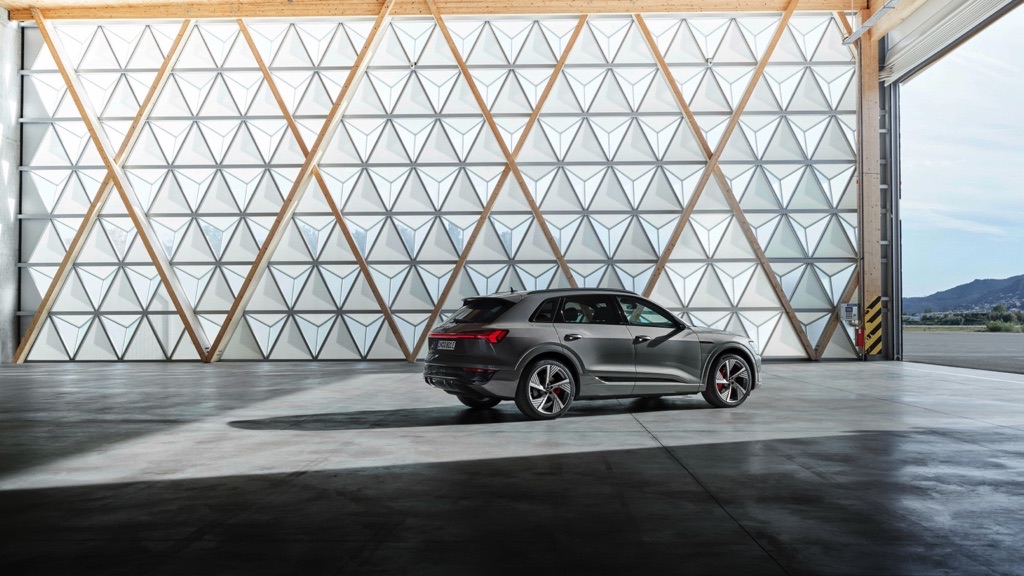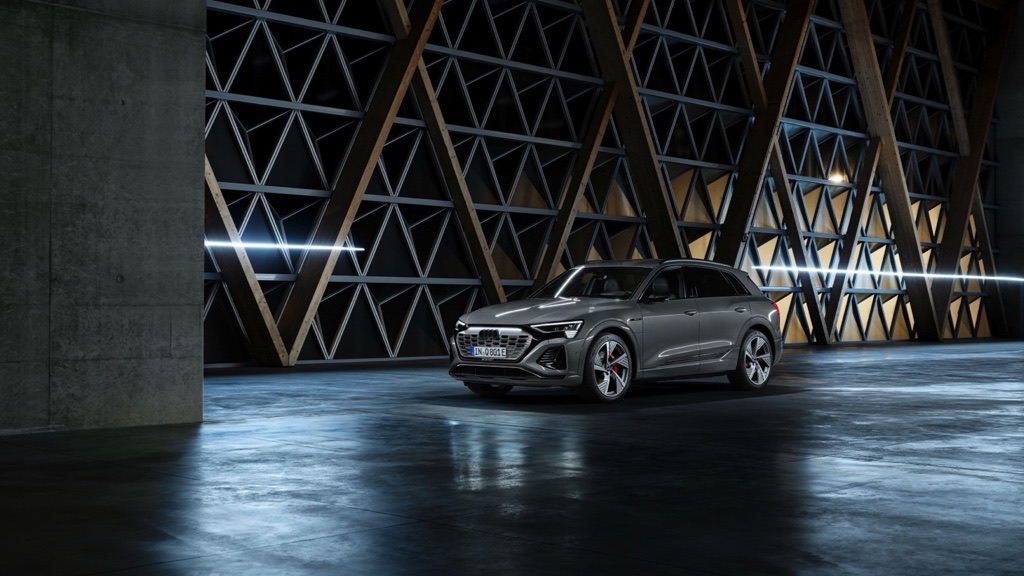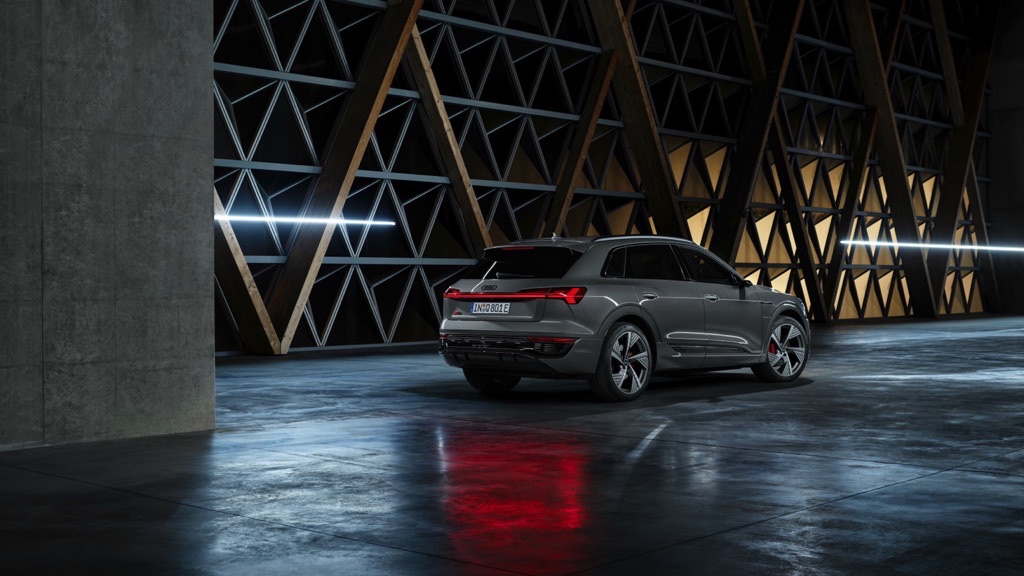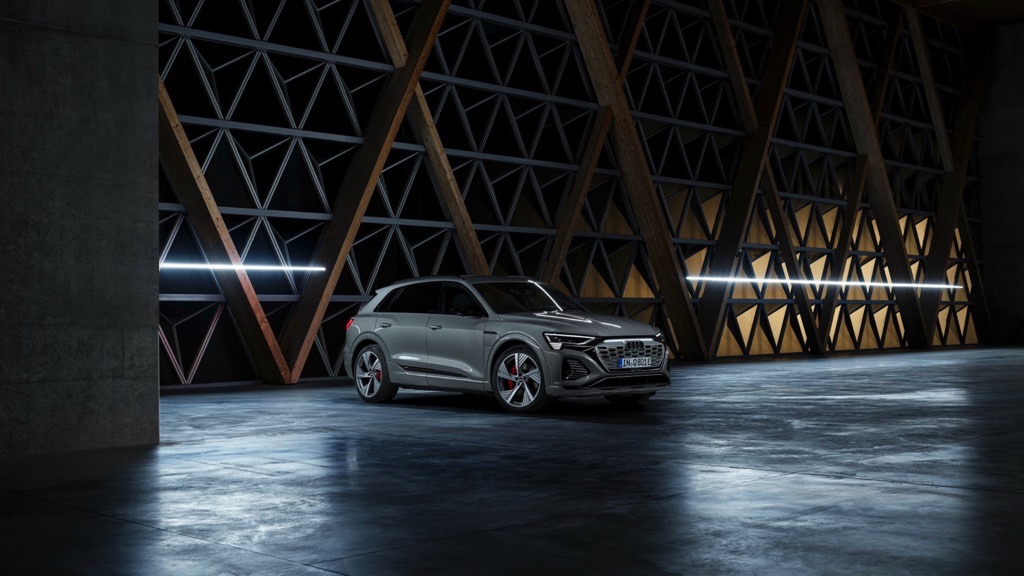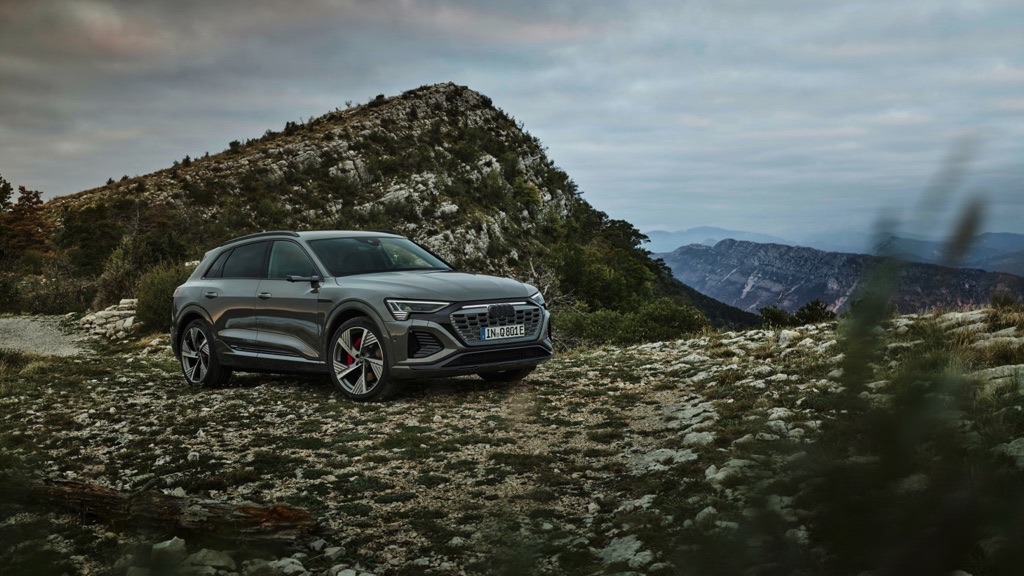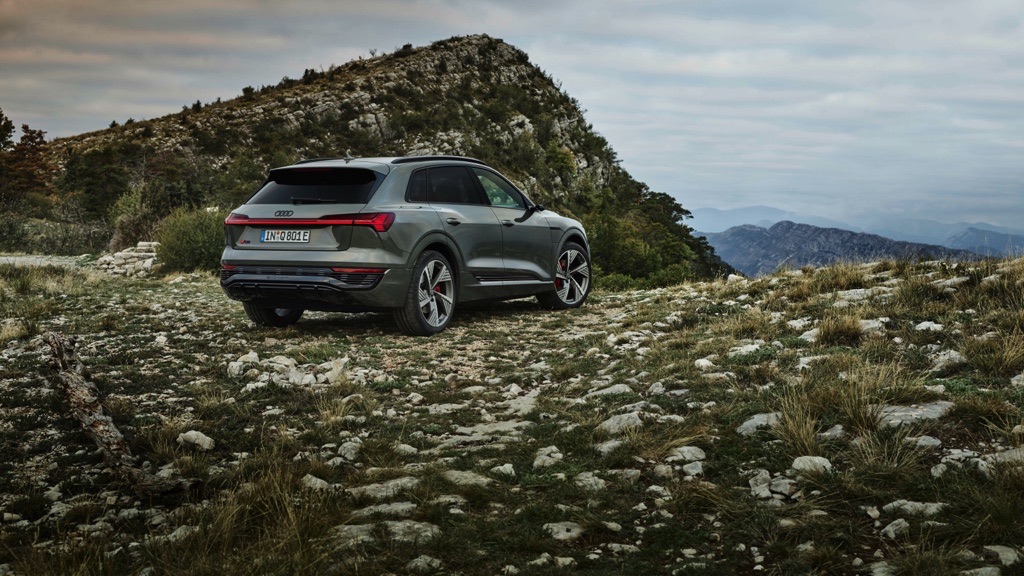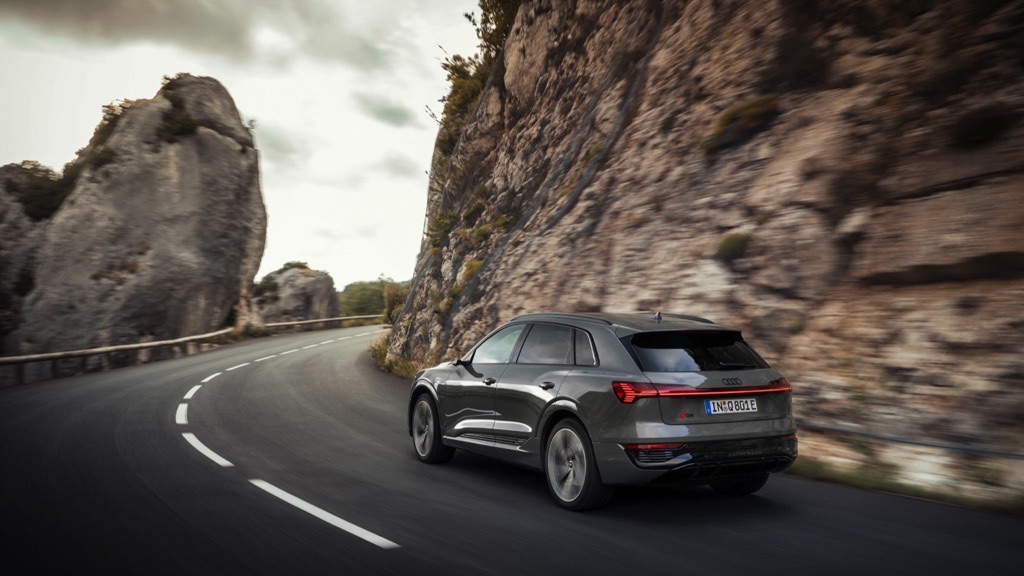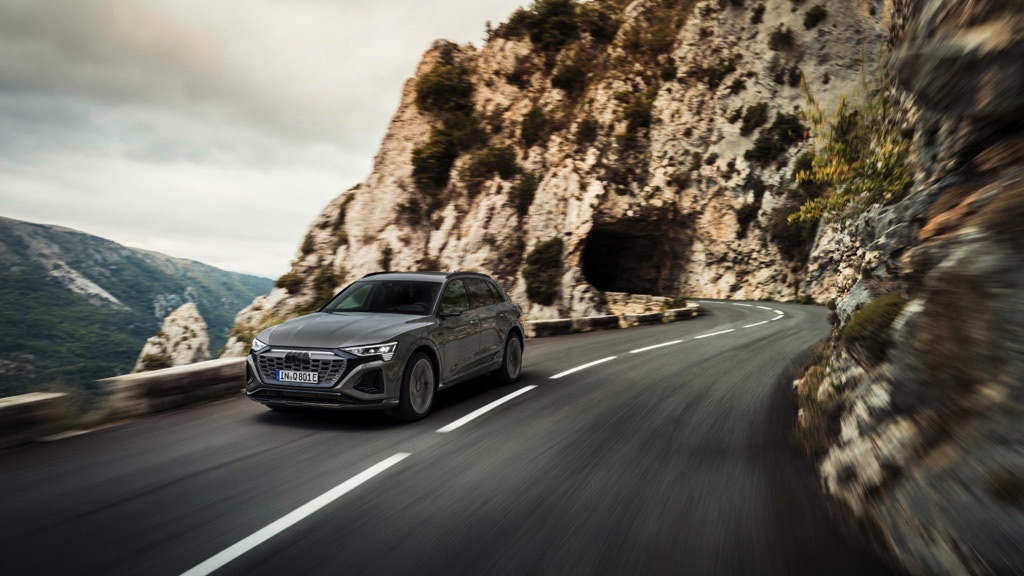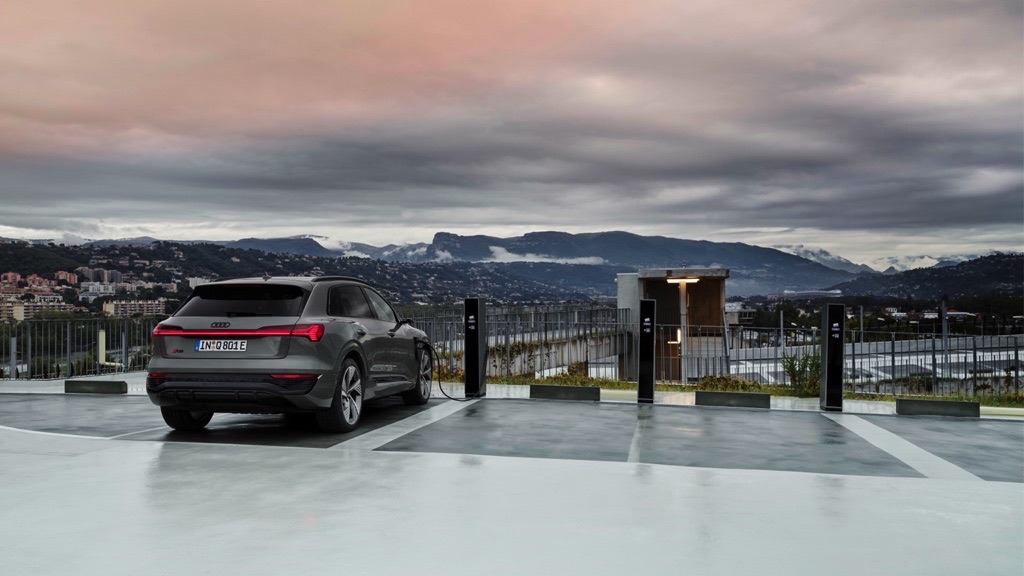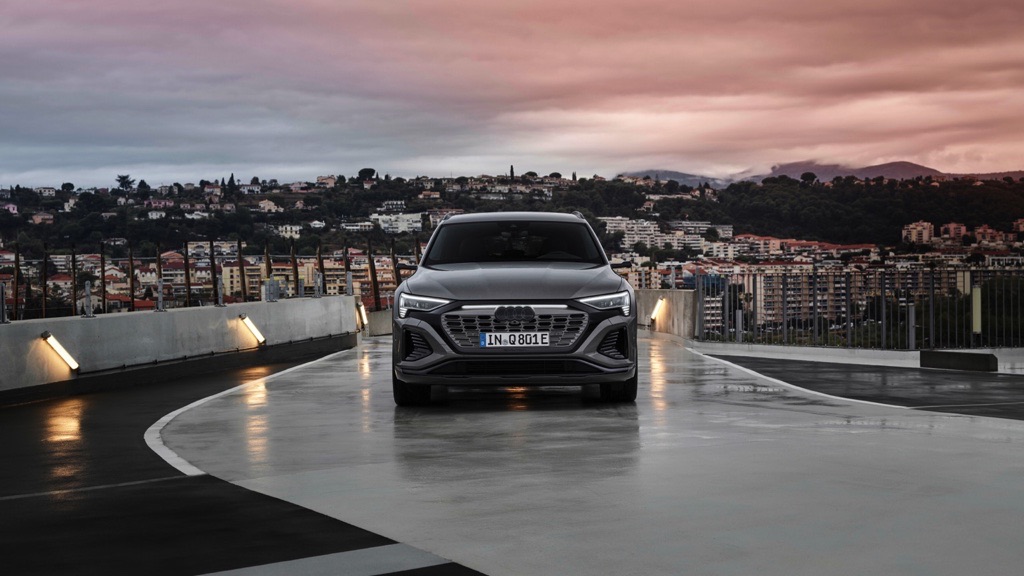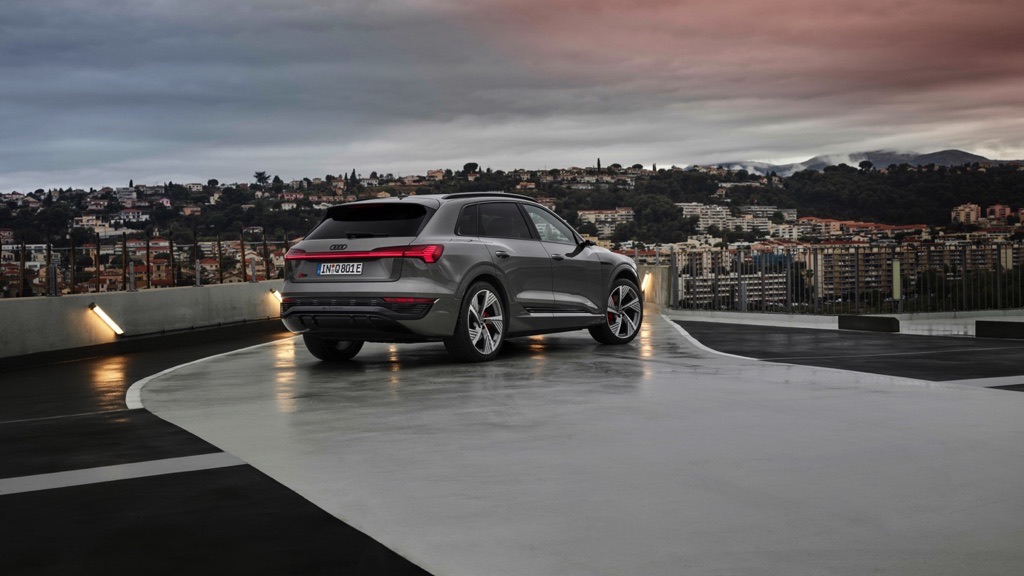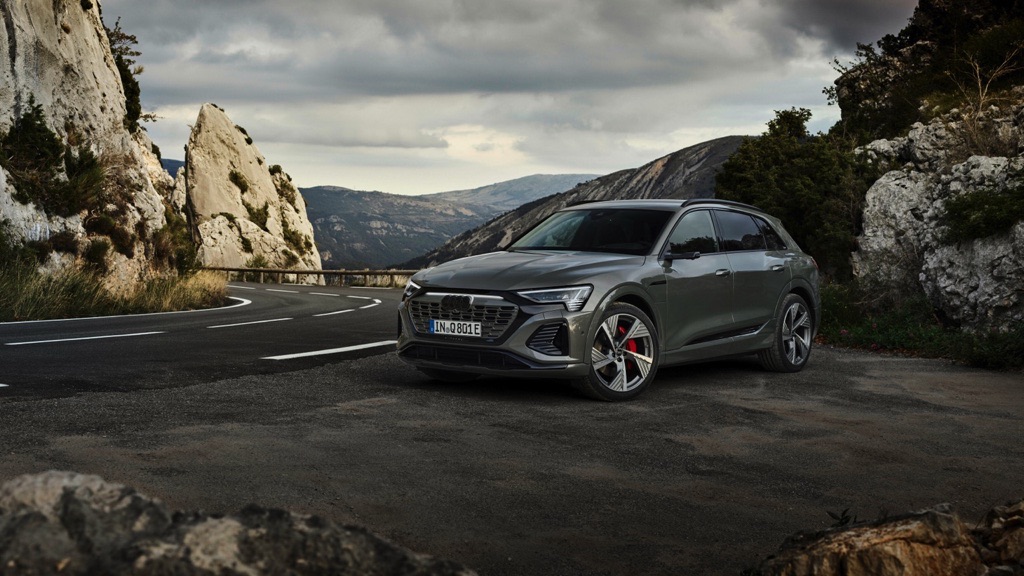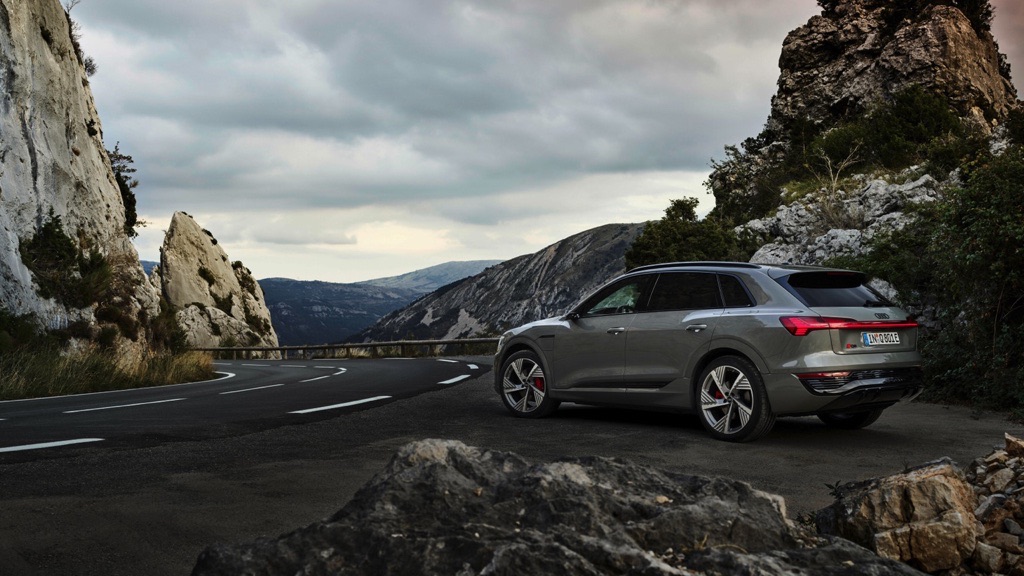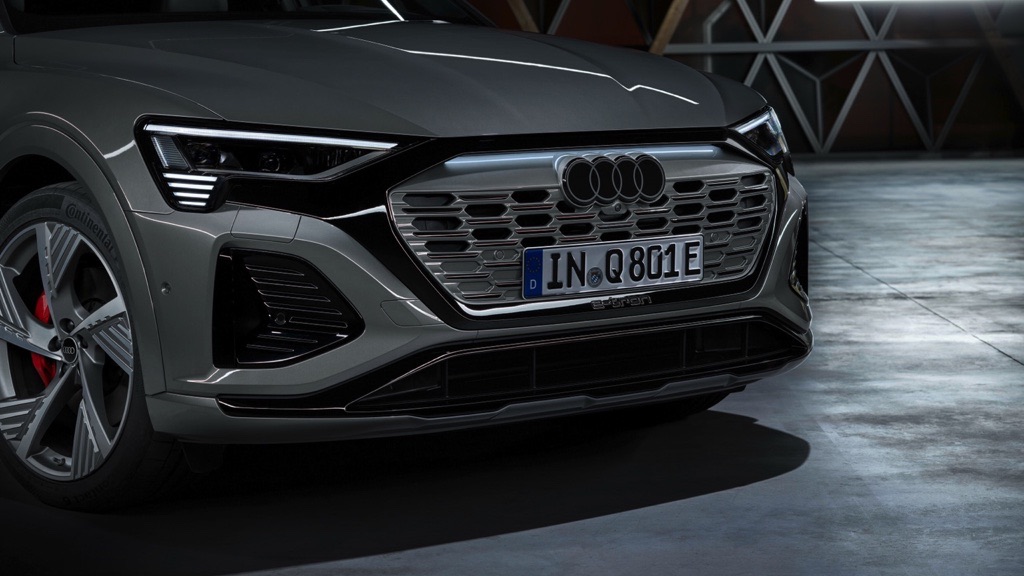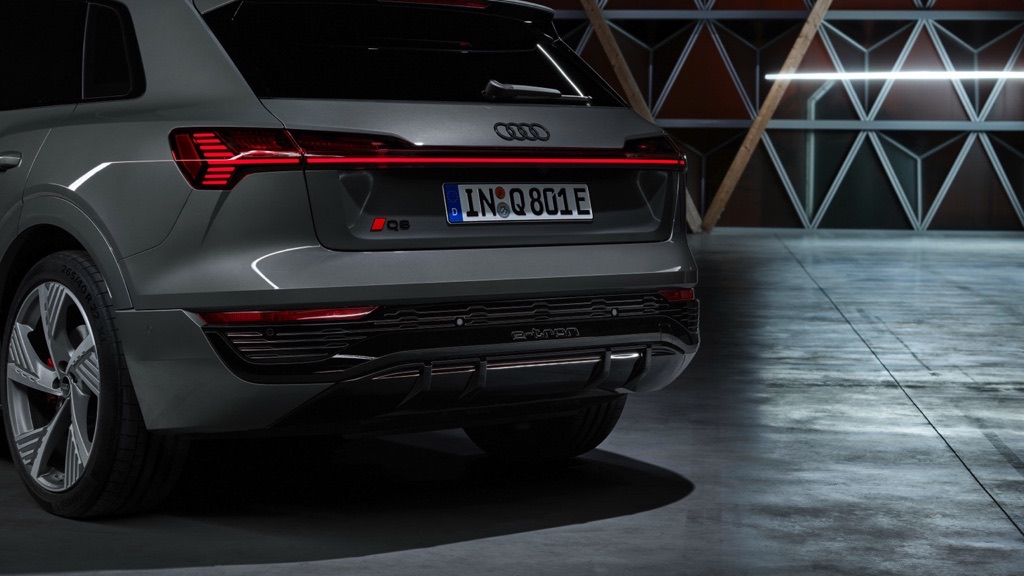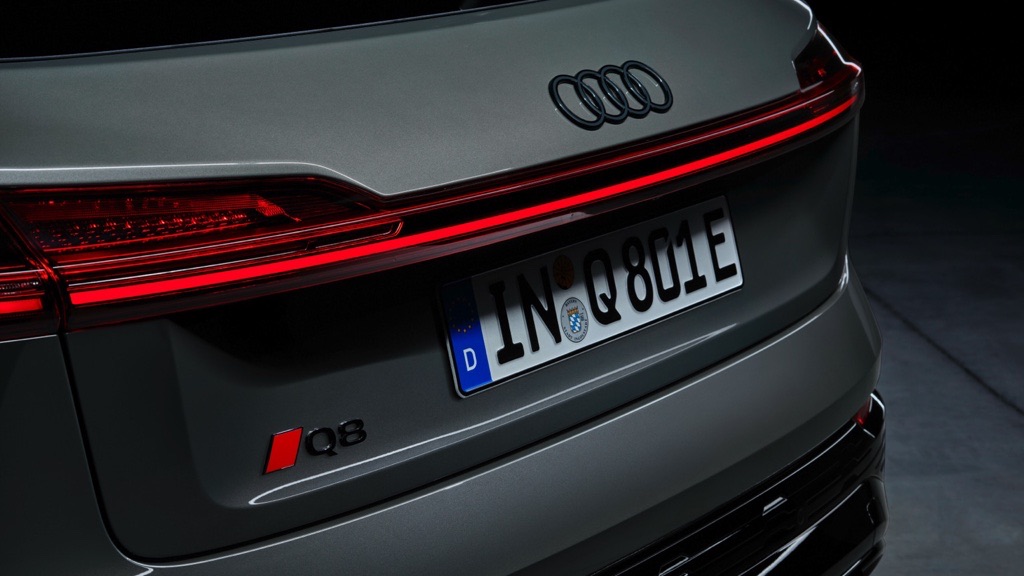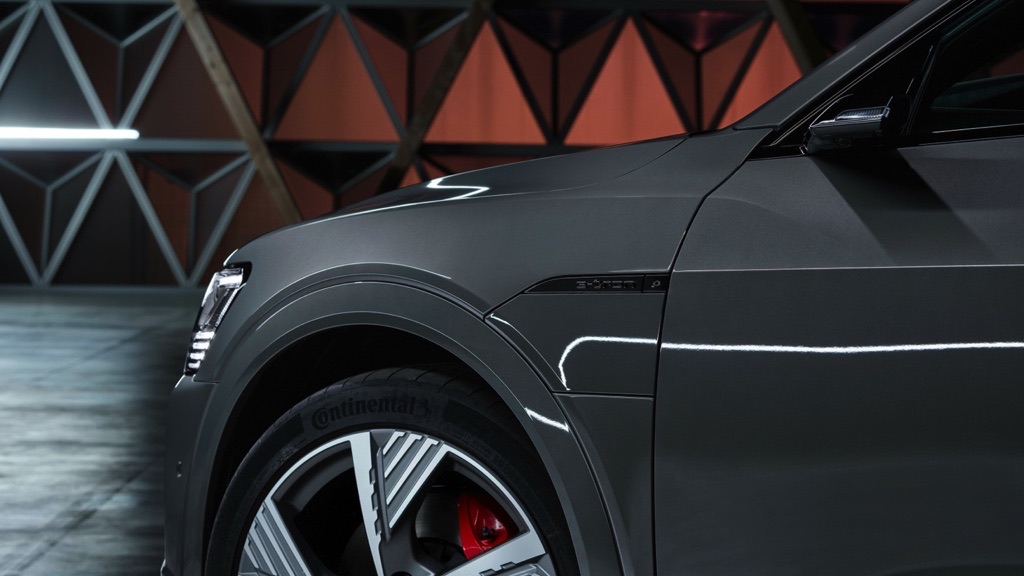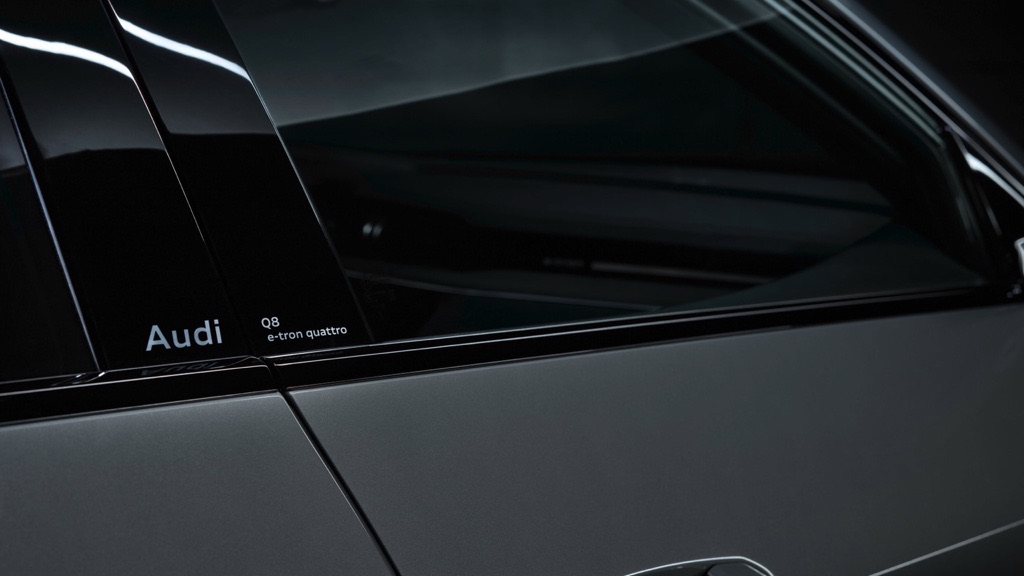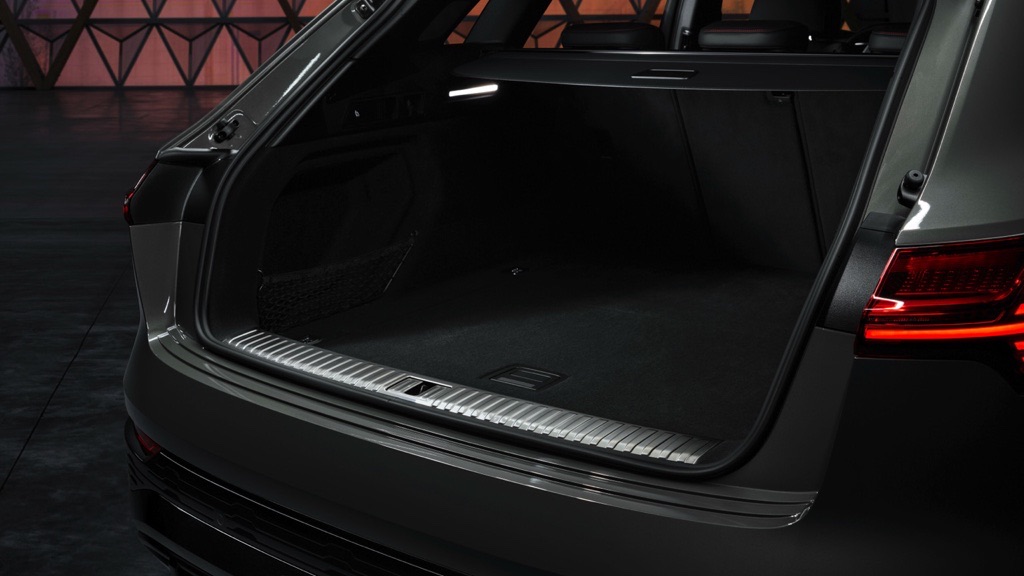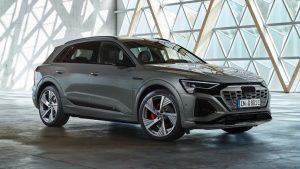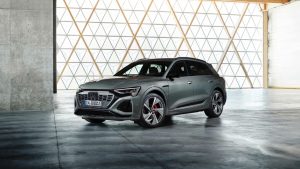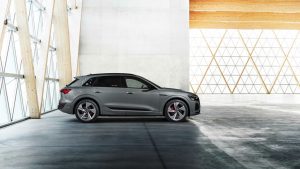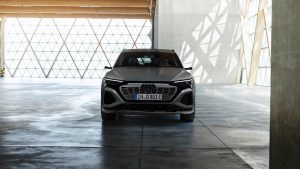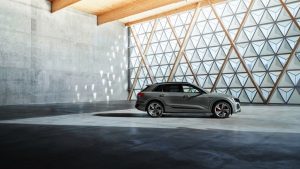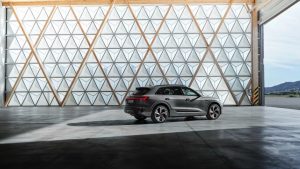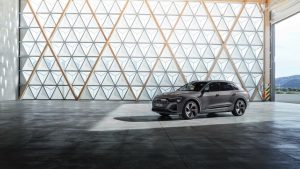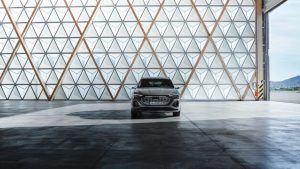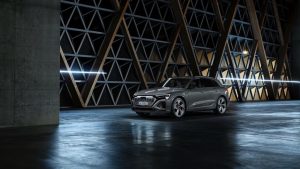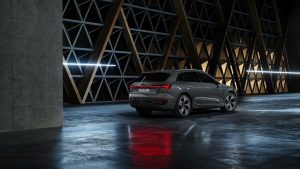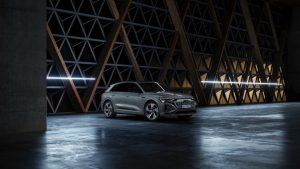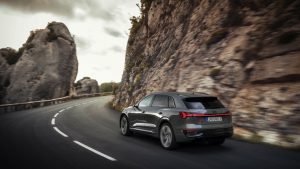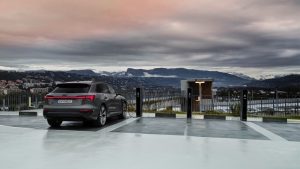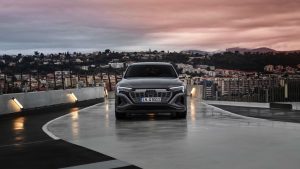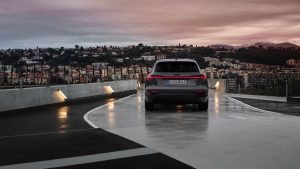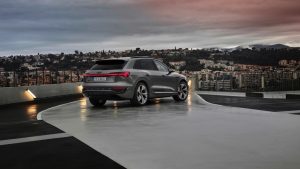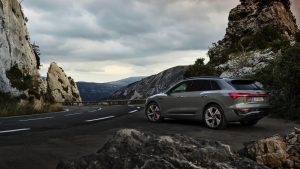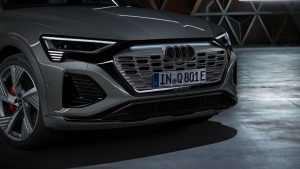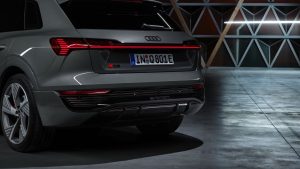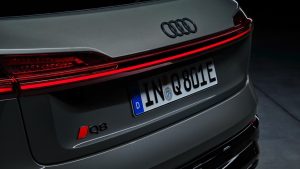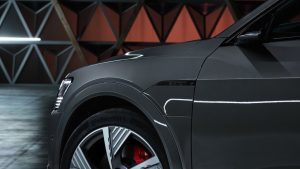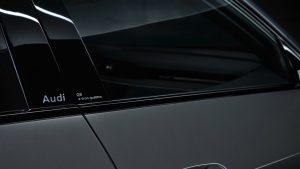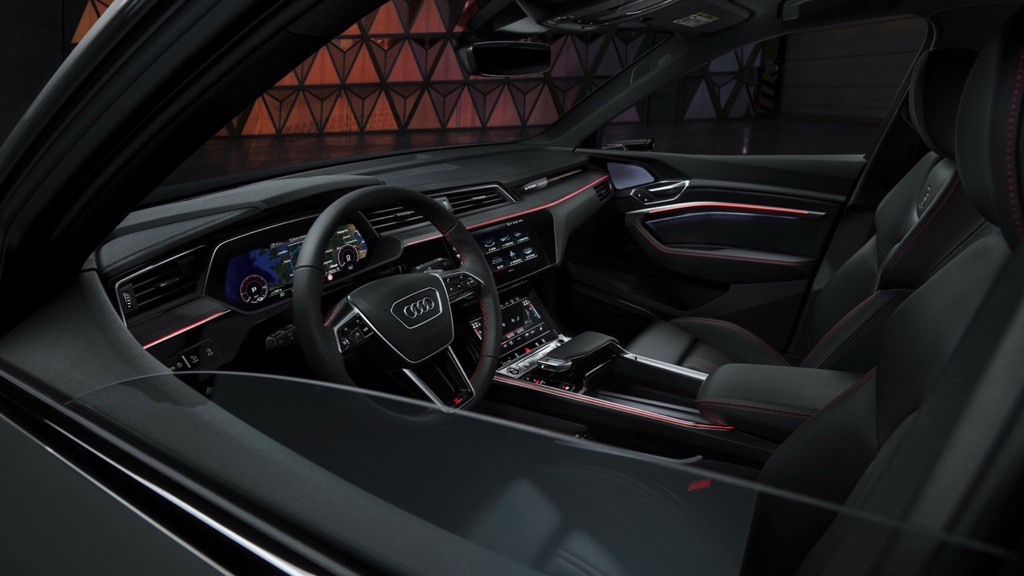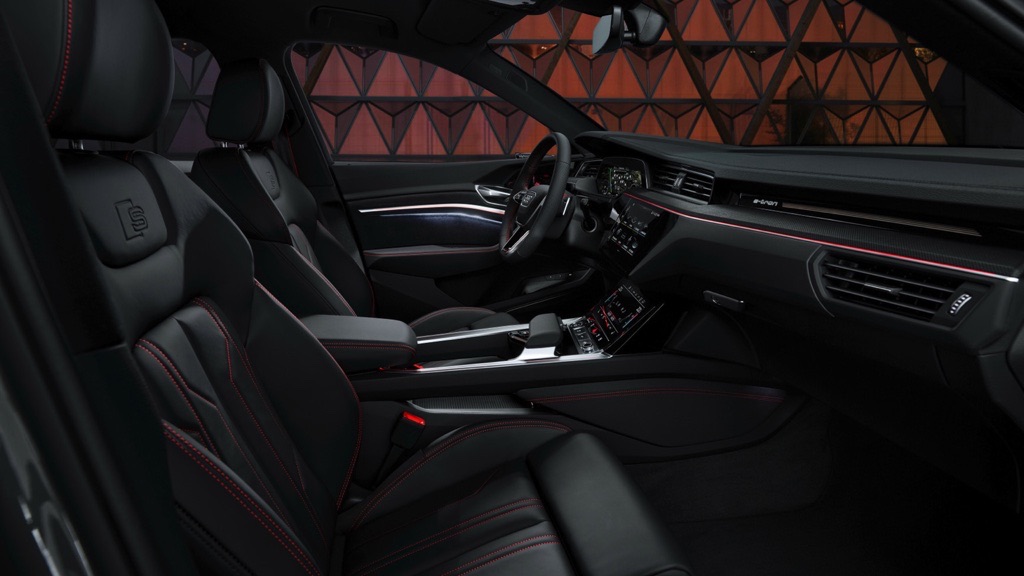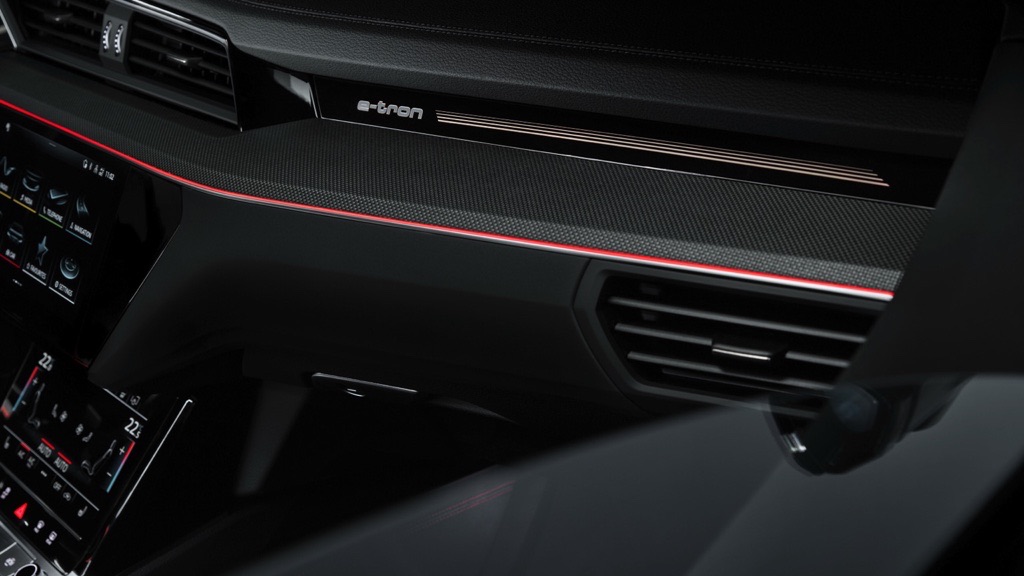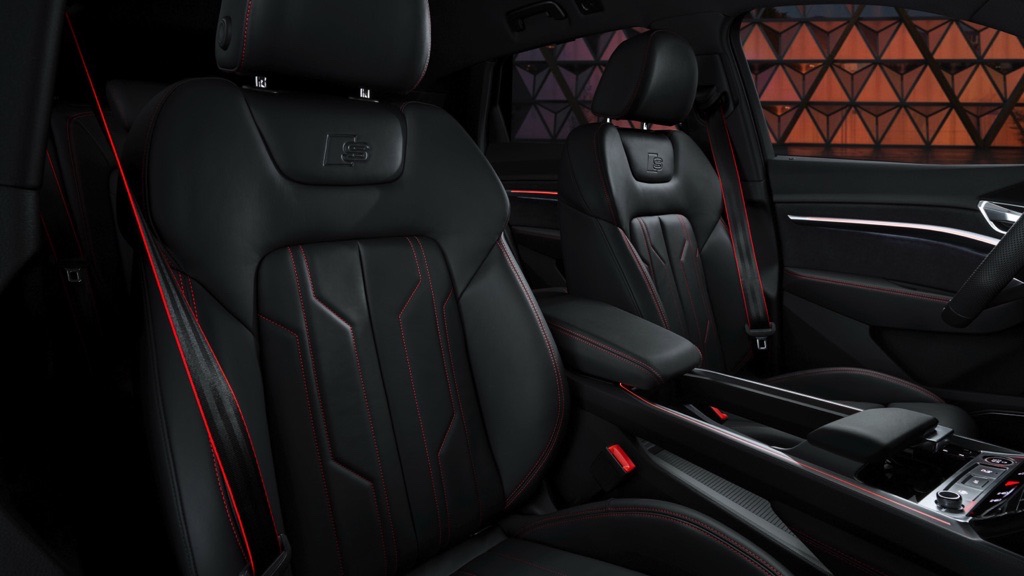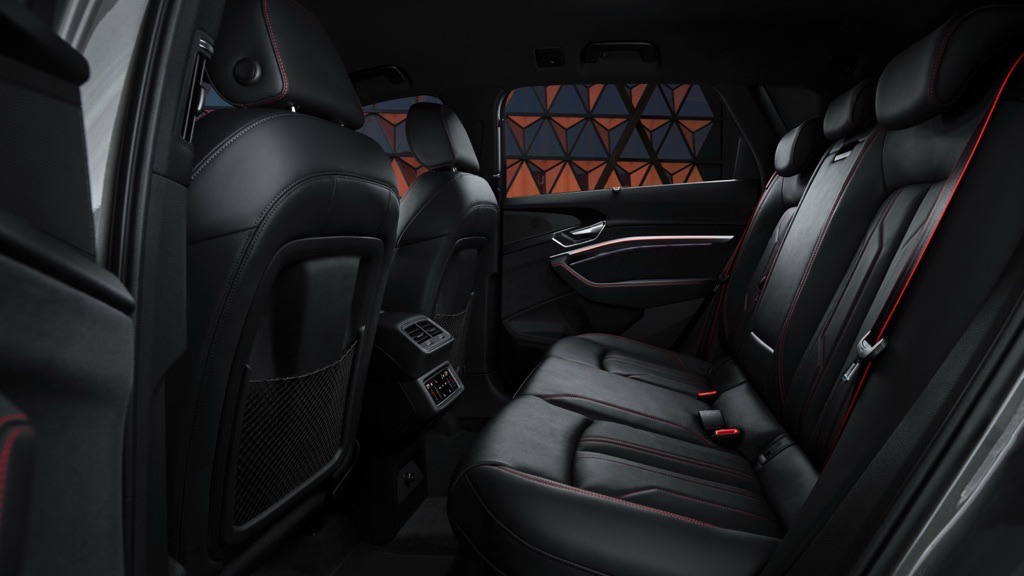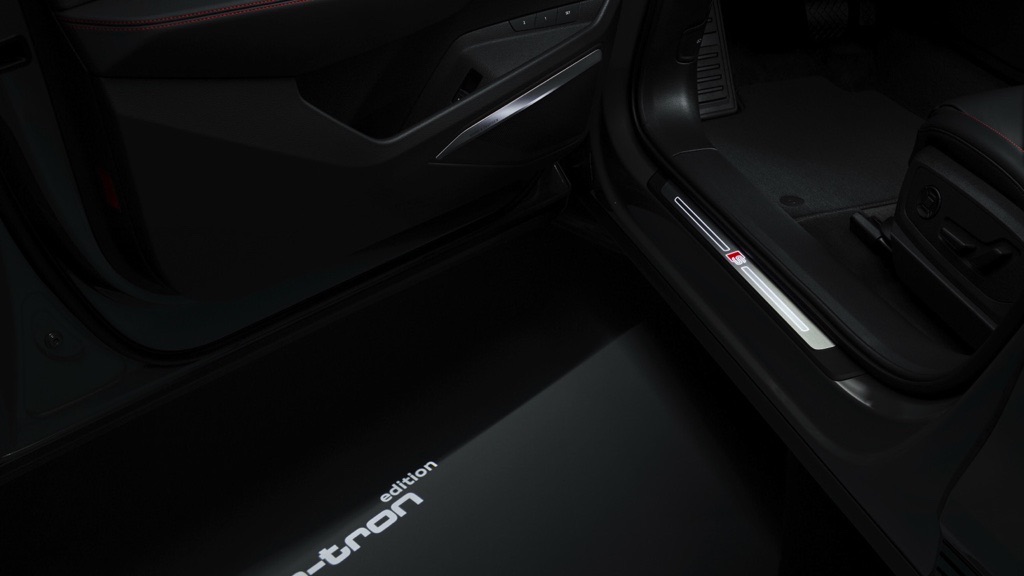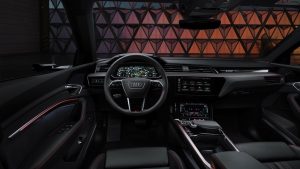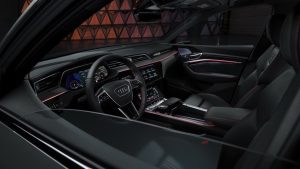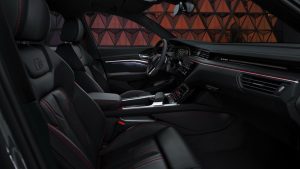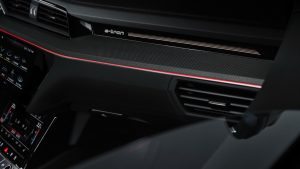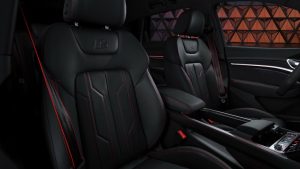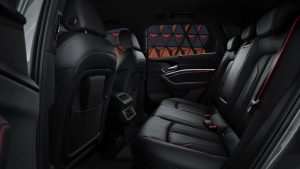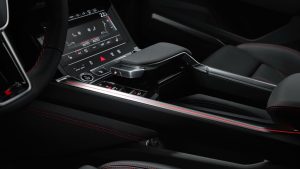The Audi Q8 e-tron 50 quattro is a luxurious all-electric SUV that combines Audi’s renowned craftsmanship with cutting-edge electric technology. It offers a blend of performance, comfort, and sustainability, making it an enticing option for those seeking an electric vehicle with premium features. Here are the brief technical specifications of the Audi Q8 e-tron 50 Quattro:

- Electric Powertrain: The Q8 e-tron 50 quattro is equipped with an electric motor that delivers a maximum power output of 230 kW (around 308 horsepower) and 664 Nm of torque. The motor is integrated into the rear axle, providing all-wheel drive capability and ensuring excellent traction and stability.
- Battery and Range: The vehicle comes with a high-capacity lithium-ion battery pack with a capacity of 95 kWh. This allows the Q8 e-tron to achieve an estimated electric range of up to 450 kilometers (approximately 280 miles) under ideal driving conditions. The range may vary depending on factors such as driving style, road conditions, and temperature.
- Charging Capabilities: The Q8 e-tron 50 quattro supports both AC and DC charging. With a compatible charging station, the vehicle can charge at a maximum power of 150 kW using DC fast charging. This enables the battery to be charged from 0 to 80% in approximately 30 minutes. When using a standard AC charger, the charging time may vary but typically takes several hours to fully charge the battery.
- Performance: The Q8 e-tron 50 quattro offers impressive performance capabilities. It can accelerate from 0 to 100 km/h (0 to 62 mph) in approximately 5.6 seconds, showcasing its quick acceleration. The top speed is electronically limited to 200 km/h (approximately 124 mph).
- Interior and Features: Audi is known for its luxurious interiors, and the Q8 e-tron is no exception. It features a spacious and well-appointed cabin with premium materials and advanced technologies. The vehicle includes Audi’s Virtual Cockpit digital instrument cluster, a large touchscreen infotainment system, and a host of driver-assistance features such as adaptive cruise control, lane-keeping assist, and parking assistance.
- Sustainability: As an all-electric vehicle, the Q8 e-tron 50 quattro contributes to reducing emissions and promoting sustainability. It produces zero tailpipe emissions, helping to improve air quality and reduce the environmental impact of transportation.
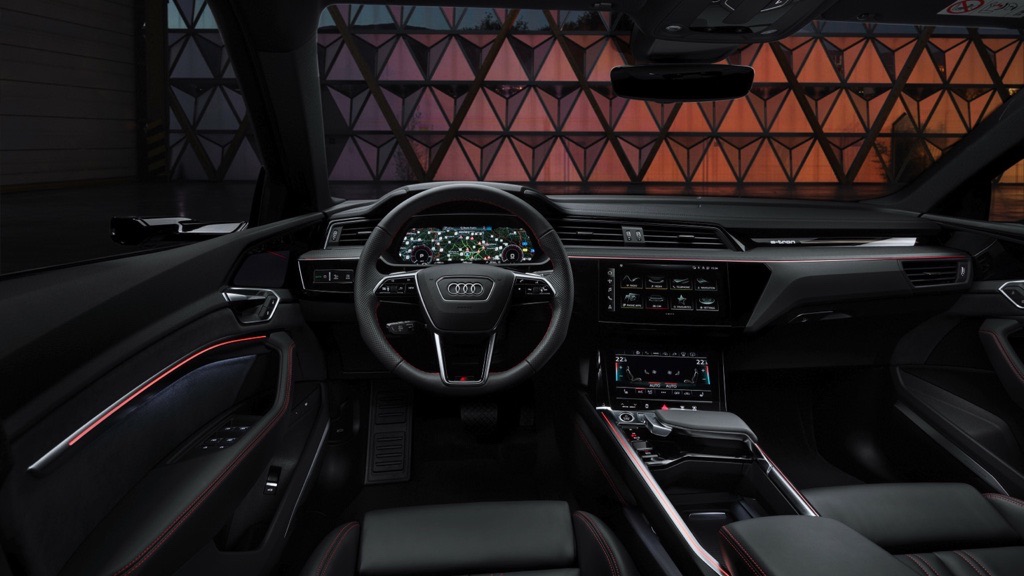
Overall, the Audi Q8 e-tron 50 quattro combines the elegance and luxury of an Audi SUV with the benefits of electric mobility. With its impressive range, powerful performance, and advanced features, it offers a compelling option for those seeking a high-end electric vehicle experience.
| Performance | |
| Acceleration 0 – 100 km/h | 5.6 sec |
| Top Speed | 200 km/h |
| Electric Range | 505 km |
| Total Power | 300 kW (408 PS) |
| Total Torque | 664 Nm |
| Drive | AWD |
| Battery | |
| Nominal Capacity | 114.0 kWh |
| Battery Type | Lithium-ion |
| Number of Cells | 432 |
| Architecture | 400 V |
| Useable Capacity | 106.0 kWh |
| Cathode Material | NCA |
| Pack Configuration | 108s4p |
| Nominal Voltage | 397 V |
| Charging | |
| Home / Destination | |
| Charge Port | Type 2 |
| Port Location | Driver’s Side – Front |
| Port Location 2 | Passenger Side – Front |
| Charge Power | 11 kW AC |
| Charge Time (0->505 km) | 11h30m |
| Charge Speed | 45 km/h |
| Fast Charging | |
| Fastcharge Port | CCS |
| FC Port Location | Driver’s Side – Front |
| FC Port Location 2 | – |
| Fast charge Power (max) | 168 kW DC |
| Fastcharge Time (51->404 km) | 33 min |
| Fastcharge Speed | 640 km/h |
| Energy Consumption | |
| EVDB Real Range | |
| Range | 505 km |
| Vehicle Consumption | 210 Wh/km |
| CO2 Emissions | 0 g/km |
| Vehicle Fuel Equivalent | 2.4 l/100km |
| WLTP Ratings (TEL) | |
| Range | 582 km |
| Rated Consumption | 206 Wh/km |
| Vehicle Consumption | 182 Wh/km |
| CO2 Emissions | 0 g/km |
| Rated Fuel Equivalent | 2.3 l/100km |
| Vehicle Fuel Equivalent | 2.0 l/100km |
| WLTP Ratings (TEH) | |
| Range | 481 km |
| Rated Consumption | 244 Wh/km |
| Vehicle Consumption | 220 Wh/km |
| CO2 Emissions | 0 g/km |
| Rated Fuel Equivalent | 2.7 l/100km |
| Vehicle Fuel Equivalent | 2.5 l/100km |
| Dimensions and Weight | |
| Length | 4915 mm |
| Width | 1937 mm |
| Width with mirrors | 2189 mm |
| Height | 1633 mm |
| Wheelbase | 2928 mm |
| Weight Unladen (EU) | 2585 kg |
| Gross Vehicle Weight (GVWR) | 3180 kg |
| Max. Payload | 670 kg |
| Cargo Volume | 569 L |
| Cargo Volume Max | No Data |
| Cargo Volume Frunk | 62 L |
| Roof Load | 75 kg |
| Tow Hitch Possible | Yes |
| Towing Weight Unbraked | 750 kg |
| Towing Weight Braked | 1800 kg |
| Vertical Load Max | 80 kg |
| Miscellaneous | |
| Seats | 5 people |
| Isofix | Yes, 3 seats |
| Turning Circle | No Data |
| Platform | VW MLB |
| EV Dedicated Platform | No |
| Car Body | SUV |
| Segment | JE – Executive |
| Roof Rails | Yes |
| Heat pump (HP) | Yes |
| HP Standard Equipment | Yes |
Home And Destination Charging (0 -> 100%)
A public charging station is required to use the highest possible charging rate. The EVSE/charging station’s charging capacity affects how long it takes to fully charge the battery. The table below shows all possible options for fully charging the Audi Q8 e-tron 50 quattro.
In Europe, plugging an electric car into an outlet is often as easy as plugging it into a household outlet, but there are differences from country to country. The table below shows the different ways to charge the Audi Q8 e-tron 50 Quattro, but in some countries, some chargers may not be available.
Type 2 (Mennekes – IEC 62196)

| Charging Point | Max. Power | Power | Time | Rate |
| Standard 11.0 kW On-Board Charger | ||||
| Wall Plug (2.3 kW) | 230V / 1x10A | 2.3 kW | 54h15m | 9 km/h |
| 1-phase 16A (3.7 kW) | 230V / 1x16A | 3.7 kW | 33h45m | 15 km/h |
| 1-phase 32A (7.4 kW) | 230V / 1x32A | 7.4 kW | 17 hours | 30 km/h |
| 3-phase 16A (11 kW) | 400V / 3x16A | 11 kW | 11h30m | 44 km/h |
| 3-phase 32A (22 kW) | 400V / 3x16A | 11 kW | 11h30m | 44 km/h |
| Optional 22.0kW On-Board Charger | ||||
| Wall Plug (2.3 kW) | 230V / 1x10A | 2.3 kW | 54h15m | 9 km/h |
| 1-phase 16A (3.7 kW) | 230V / 1x16A | 3.7 kW | 33h45m | 15 km/h |
| 1-phase 32A (7.4 kW) | 230V / 1x32A | 7.4 kW | 17 hours | 30 km/h |
| 3-phase 16A (11 kW) | 400V / 3x16A | 11 kW | 11h30m | 44 km/h |
| 3-phase 32A (22 kW) | 400V / 3x32A | 22 kW | 5h45m | 88 km/h |
Fast Charging (10 -> 80%)
If you want to enjoy driving an electric car, one of the most important features to consider is the number of miles per hour the car can travel while charged. This is called the “range” of the car. All electric cars have a certain range, even if they are 100% charged. This is because they do not have an internal combustion engine to lean on if you need to drive a long distance.
Max. Power: The maximum power provided by the charging point
Avg. Power: The average power provided by the charging point during a session of 10% to 80%.
Time: the time it takes to charge from 10% to 80%
Speed: the average charging rate during the session of 10% to 80%
Combined Charging System (CCS Combo 2)
| Charging Point | Max. Power | Avg. Power | Time | Rate |
| CCS (50 kW DC) | 50 kW | 50 kW | 94 min | 220 km/h |
| CCS (175 kW DC) | 168 kW | 144 kW | 33 min | 640 km/h |
| CCS (350 kW DC) | 168 kW | 144 kW | 33 min | 640 km/h |
| Brand | Audi |
| Model | Q8 e-tron 50 quattro |
| Body Style | SUV |
| Motor power | 300 |
| Maximum Torque, Nm | 664 |
| Battery Energy, kWh | 114.0 |
| Power reserve (NEDC/EPA/WLTP), km | - / - / 505 |
| Level Charging (230/400/DC), hours | 54.5 / 5.45 / 0.33 |
| Electrical Acceleration, 0-100 km/h (0-62.1 mph) in sec | 5.6 |
| Top Speed, km/h | 200 |
